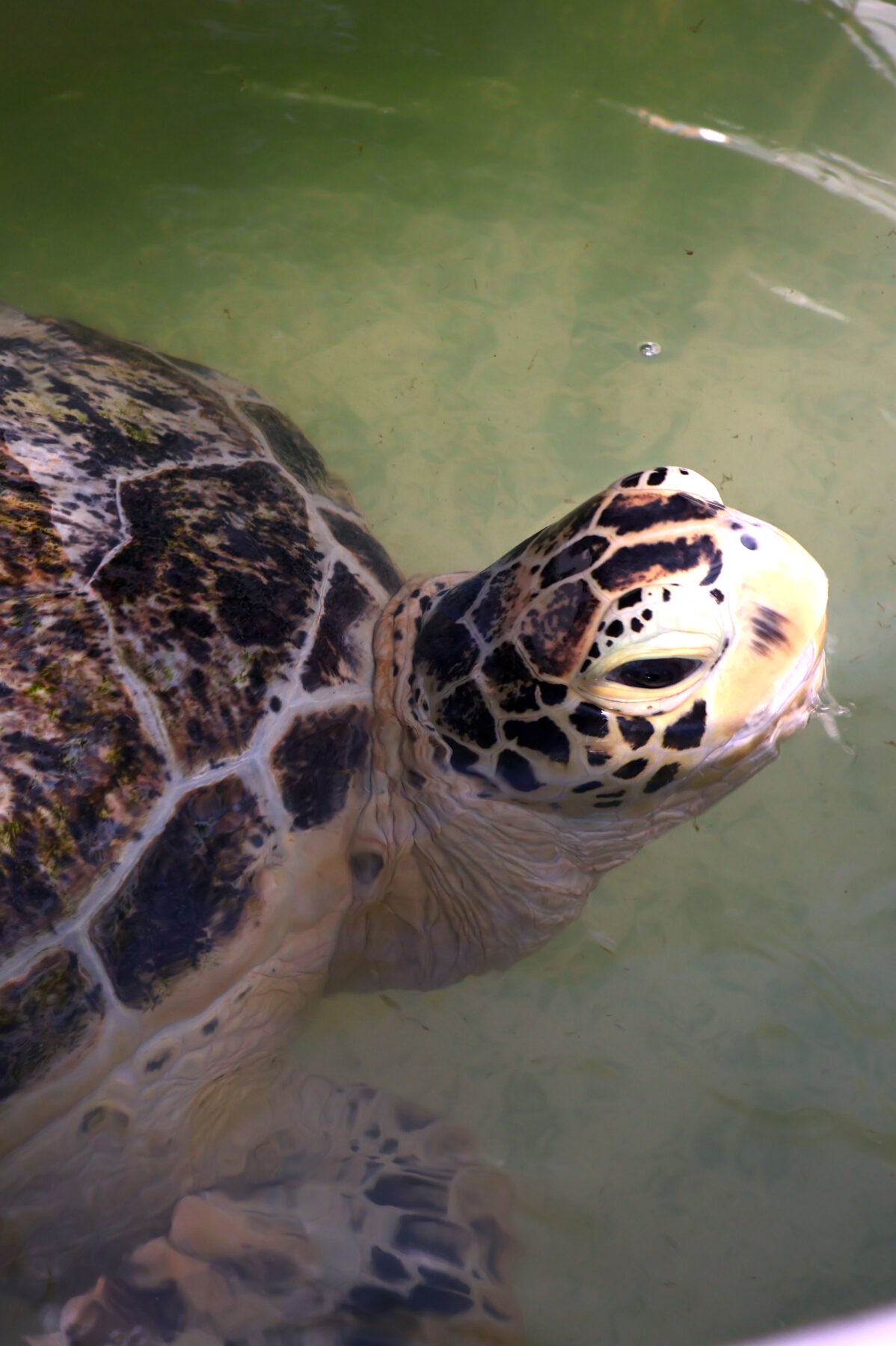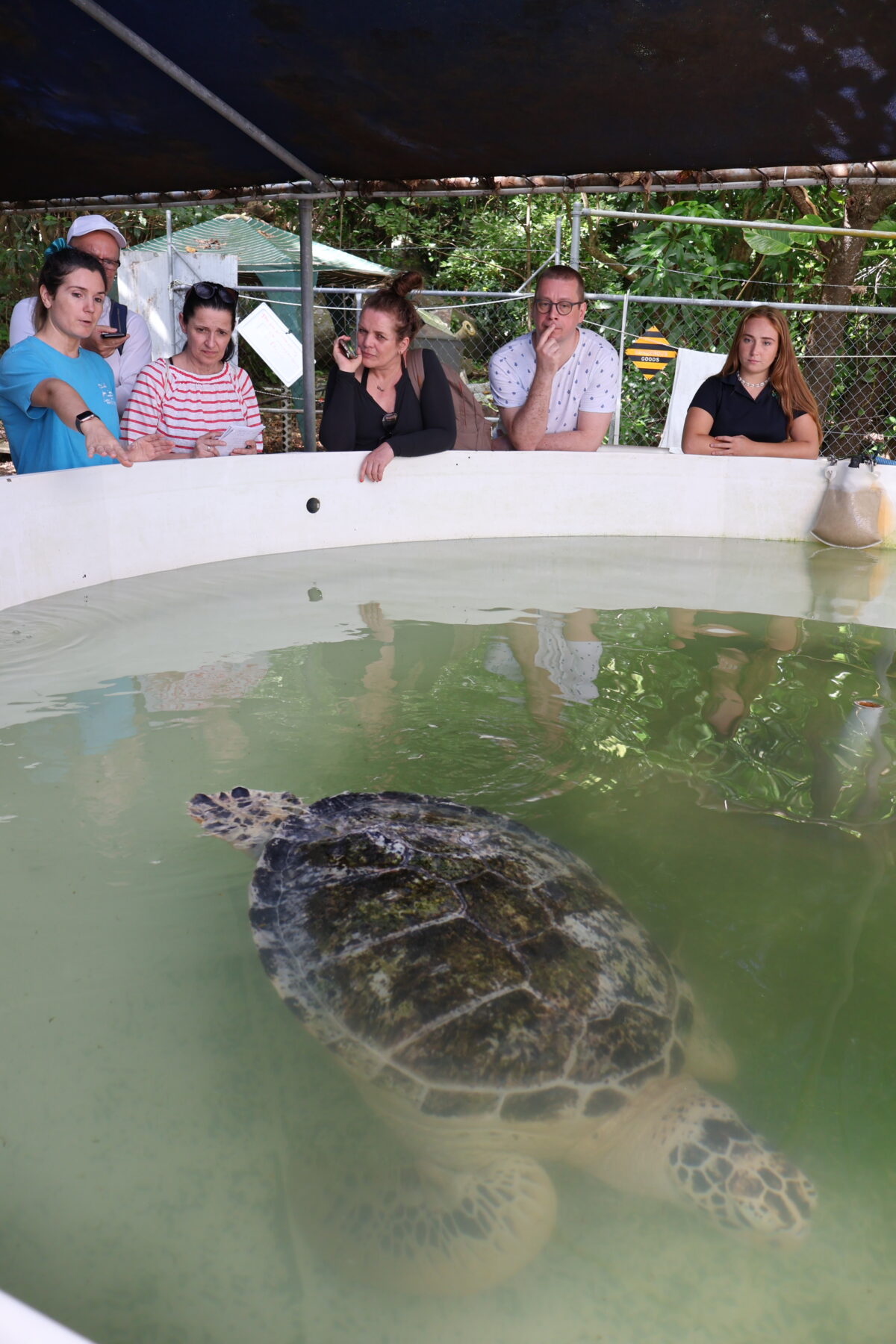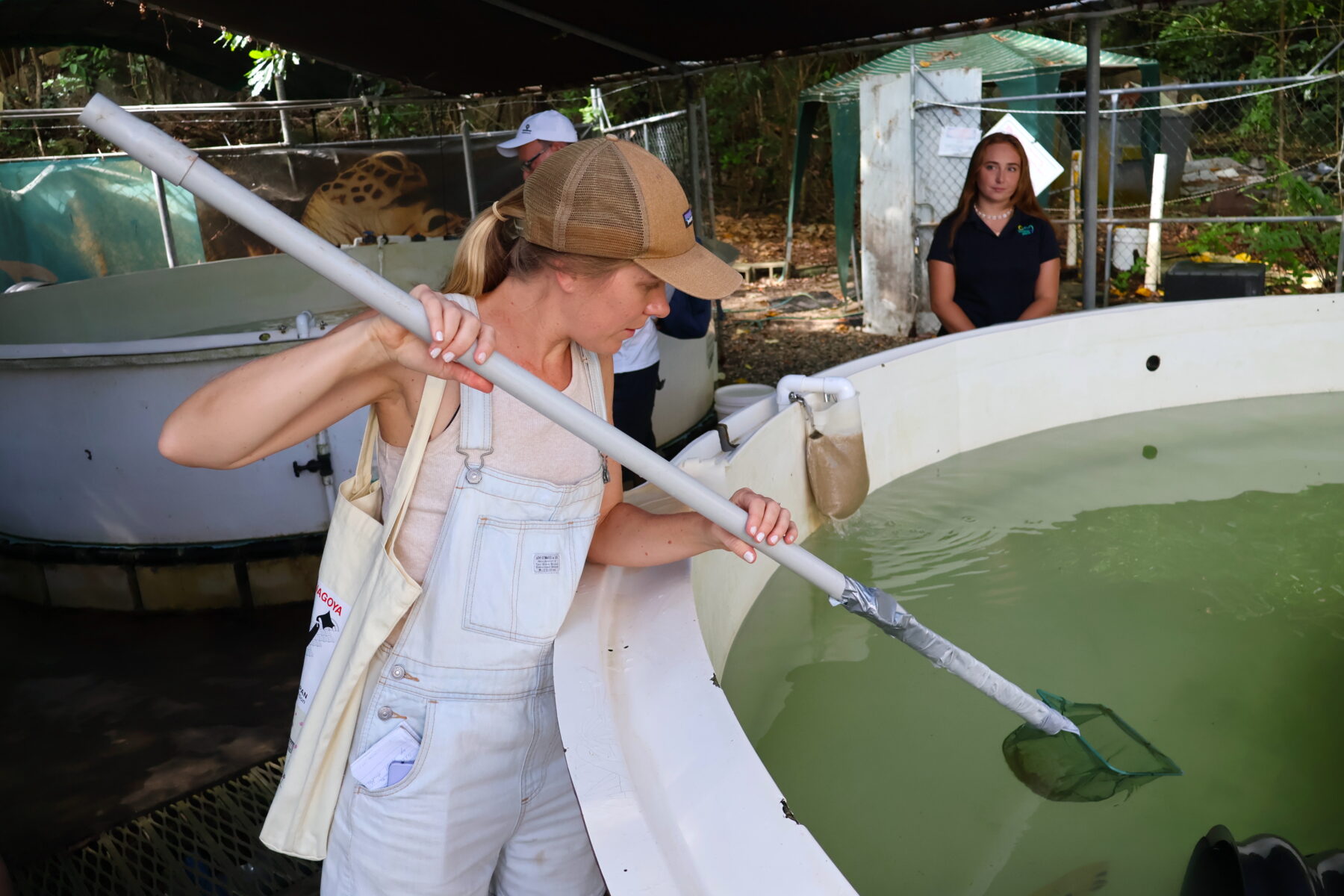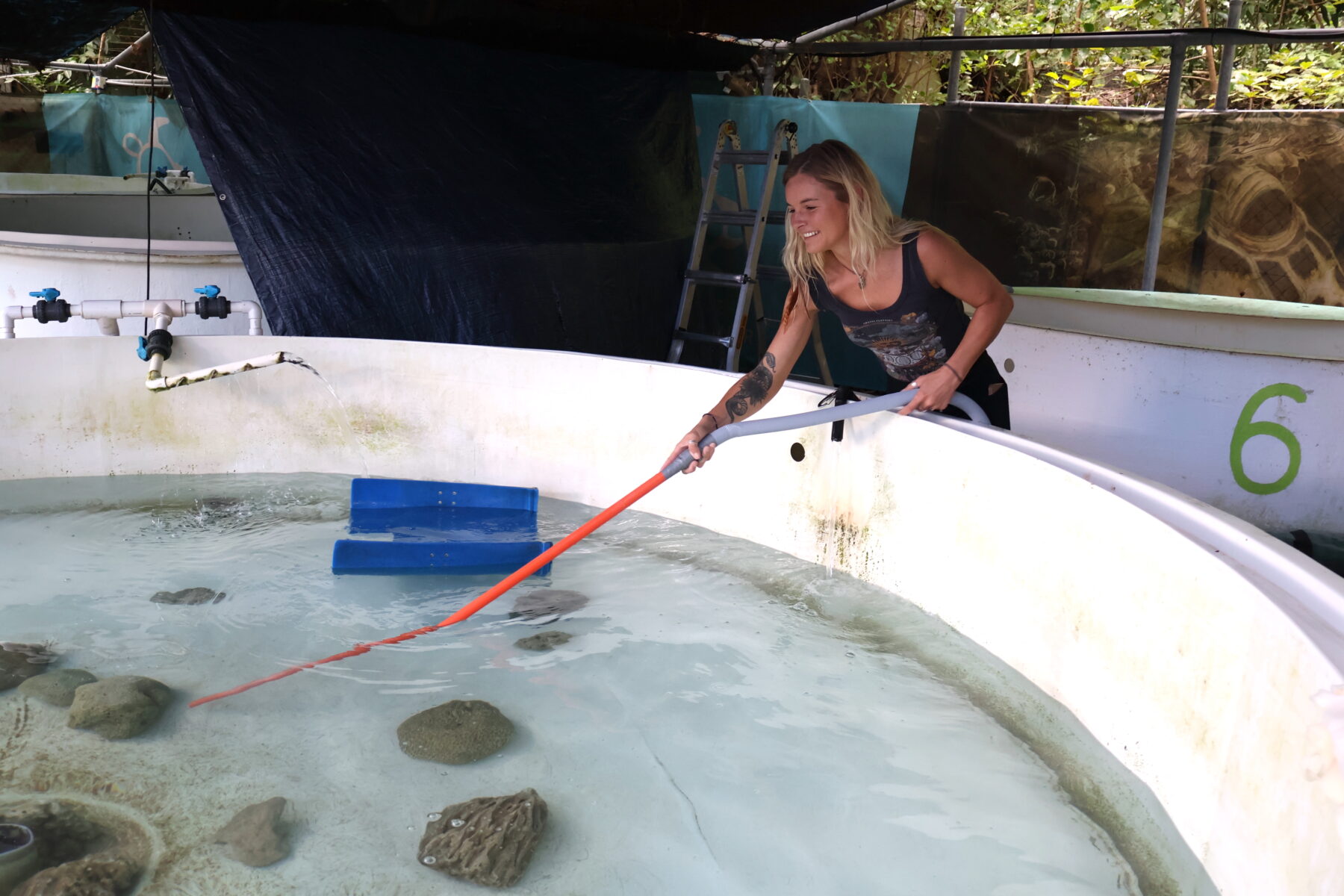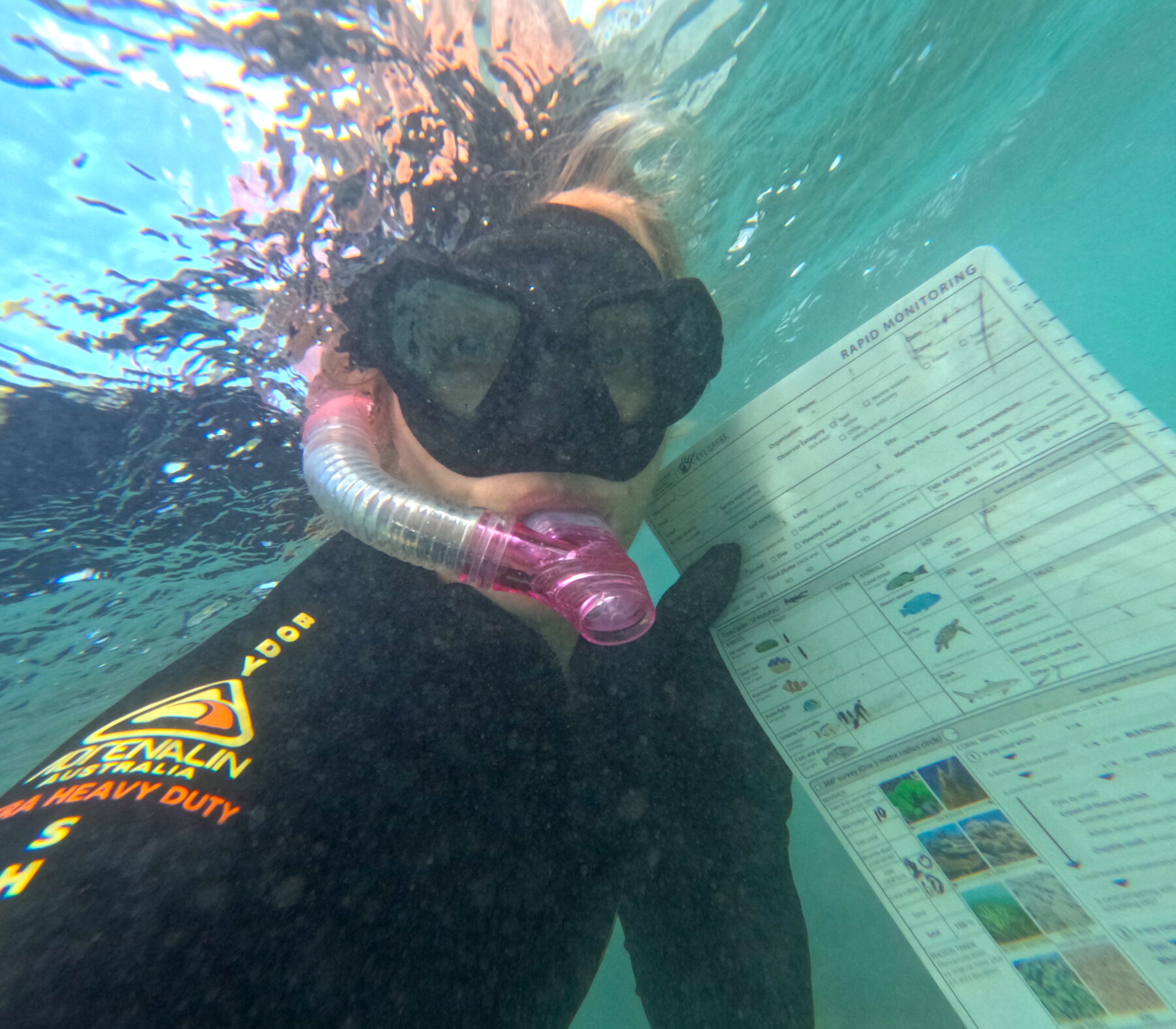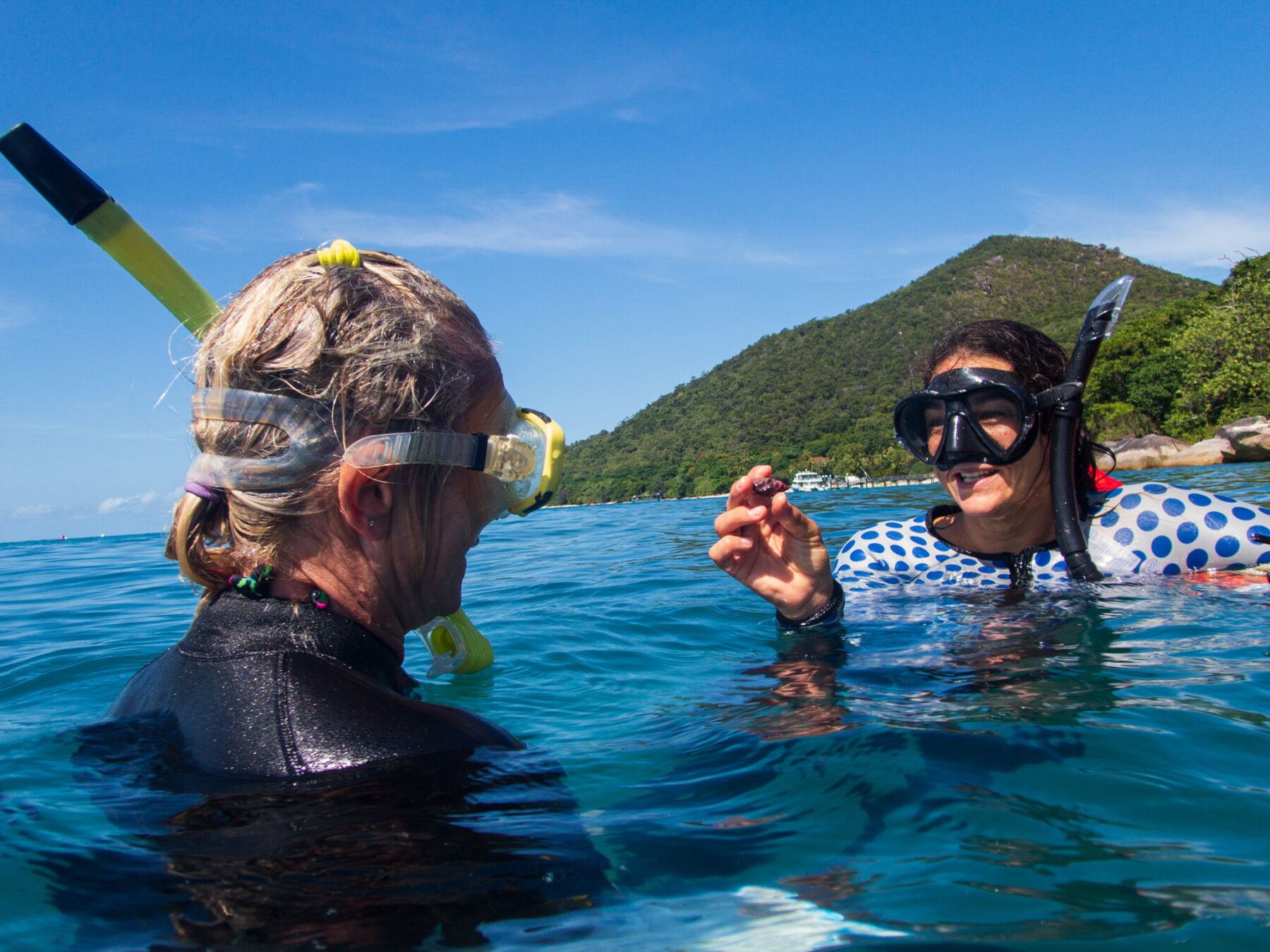Shelby, the green sea turtle, has a bubble under her carapace that causes her to float on the water’s surface. It’s the result of ingesting fishing line, and appears as a deformity. The air pocket prevents Shelby from diving, which, in turn, has led to a boat strike, and now she’s also missing her back left flipper. At 40-something years of age, Shelby has floaters’ syndrome, one of the most common ailments of marine turtles, often caused by mistaking plastic bags for a favourite food – jellyfish. Yet despite Shelby’s predicament, she will soon be released back into the Coral Sea, thanks to volunteers, and now citizen scientists.
I meet Shelby at Cairns Turtle Rehabilitation Centre on the Great Barrier Reef’s Fitzroy Island. It’s here, a 45-minute ferry ride from the tourist hub of Cairns, that Shelby and two other green turtles are in their last stages of recovery. They’re in what’s been nicknamed ‘the fat farm’, a place turtles come to fatten up before they’re released. Shelby is swimming around her small pool, occasionally playing with part of a corrugated plastic tube. In the tank next to her is Portia, who’s recovering from a neurological disease, while around the corner is Raine, who we’re told is currently stressed and off-limits to visitors. The centre can accommodate 11 turtles, and island day-trippers and overnight guests can book in for regular educational talks. I consider myself one of the lucky ones, though, because I get to go a little deeper, be hands-on, while playing marine biologist for a day.
I’ve signed up to Fitzroy Island’s Marine Conservation Program. Launched in January this year, the program is a collaboration between Fitzroy Island Resort, Great Barrier Reef Marine Park Authority and non-profits Reef Restoration Foundation and Cairns Turtle Rehabilitation Centre. It’s a program that embraces the eagerness of environmentally conscious travellers by allowing them to help scientists monitor the reef and volunteer, albeit briefly, in the turtle hospital. At the hospital, participants are given basic tasks, such as feeding the turtles and scrubbing their shells. When we arrive, Shelby and her friends have already had morning tea, so we clean algae from their pools. It’s a mundane but somewhat rewarding task.
While scooping up the green flecks, I meet 28-year-old backpacker Sierra Donaldson from Oregon. Sierra is volunteering for a week, drawn to the GBR after completing her masters degree in animal behaviour and welfare. She’s wise to both the benefits and pitfalls of mixing tourism with conservation.
“I think it’s necessary, especially for raising awareness, education, as well as it benefits the animals monetarily,” Sierra says. “This place in particular is not government-funded at all, so they really rely on donations and word of mouth and volunteers…”
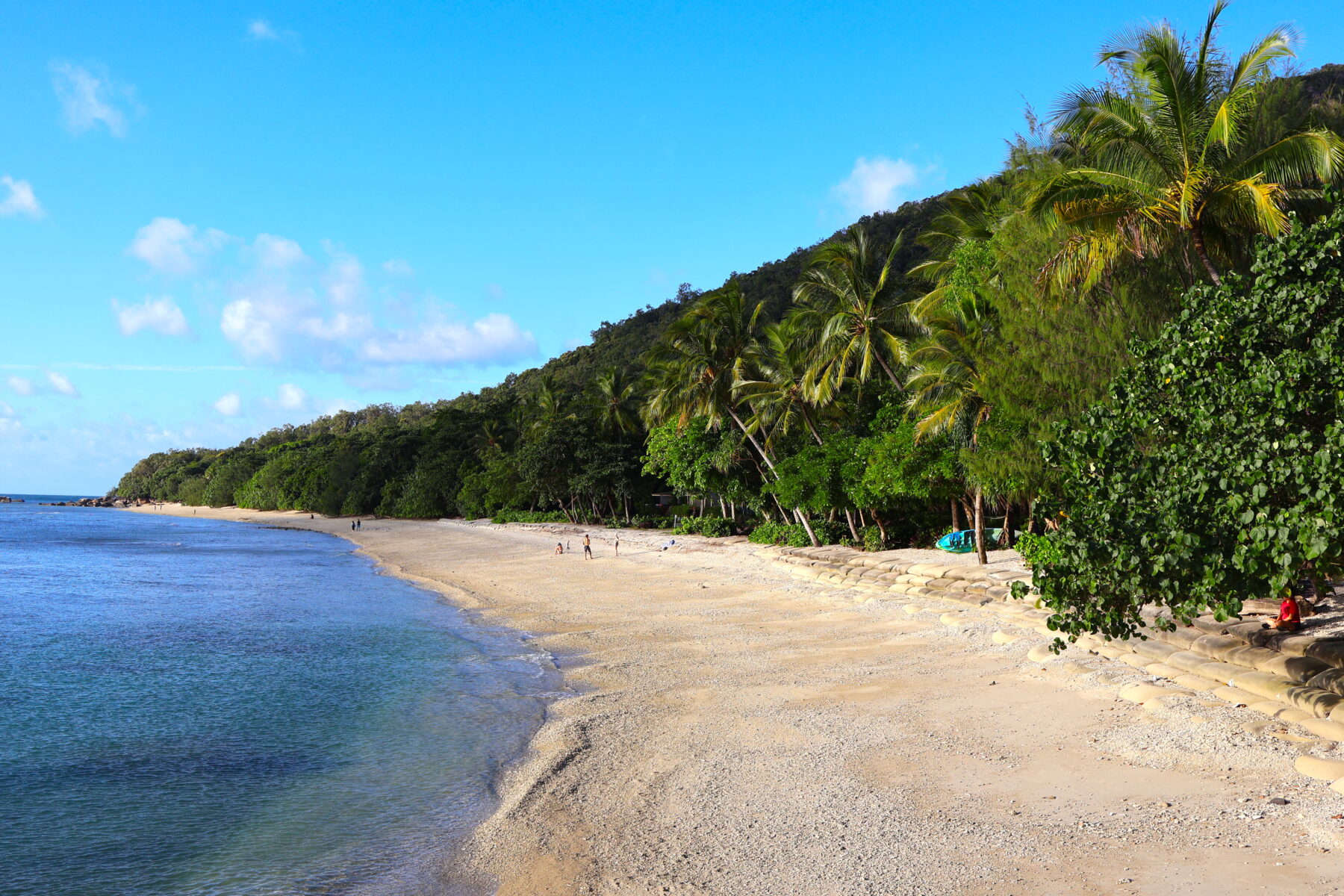
Sierra also recognises the potential negative impacts of noise, pollution and stress from the tourism industry but believes, overall, programs such as Fitzroy’s are positive.
“I think we’re in an age now and a place now where people are really starting to open their eyes and learn about conservation efforts,” she says, “and I think everyone, for the most part, is in the right headspace and trying to do the right thing.”
It’s a sentiment echoed by Fitzroy Island Master Reef Guide Azri Saparwan, who’s leading us around today. Saparwan believes in the “power of voluntourism” and says the potential that tourism has in terms of conservation of the GBR is huge. Along with helping in the turtle hospital, our role is to assist scientists identify early warning signs for reef issues such as disease. We do this by carrying out what Saparwan calls a Rapid Monitoring Survey, a first step in finding out if a reef is healthy or not. Basically, it’s entry level data collection under the sea.

And so I ready myself for the next task: snorkelling with a purpose. Dressed in head-to-toe stinger suits, mask and snorkel, and carrying an underwater fish ID chart, we waddle off Fitzroy’s coral beach. First, we simply observe the underwater environment and its inhabitants. The GBR is approximately 2300 kilometres long, and Fitzroy is one reef of innumerable. Today, we’re visiting one-fifth of one reef, in the world’s largest reef system. The painstaking work of scientists becomes glaringly obvious.
Once confident we know what we’re looking at, we “sample” the habitat for 10 minutes, partnering up to spot and record various fish species. We see one Giant Clam (Tridacna gigas), five parrotfish, genus Scaridae), and four butterflyfish (genus Chaetodontidae). The small patch of reef we’re scouring is mostly coral rubble (broken fragments of coral) but I manage to make a few marks on my waterproof ID form, which island scientists will later log online.
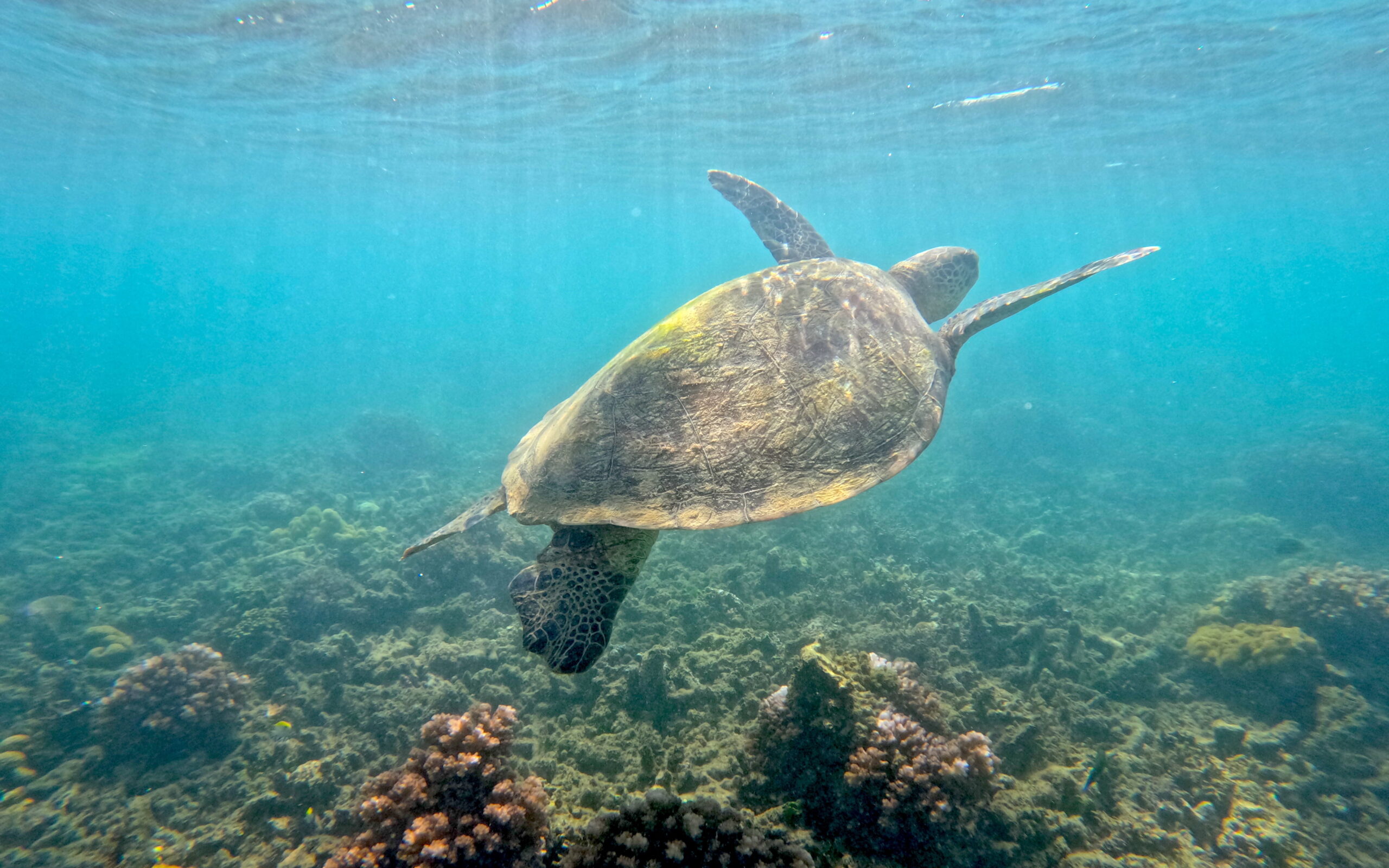
When our observational swim ends, we turn back to the start and begin looking for a tiny predator – the Drupella snail (Drupella cornus)- that camouflages cleverly into branching corals. Although branching coral is one of the hardiest, bleach-resilient species on the GBR, it makes a tasty meal for Drupella, small pink-shelled snails. I’m told the mollusk’s impact on coral isn’t as devastating as that of the crown-of-thorns starfish (Acanthaster planci) but the snail has flourished, and needs to be monitored and removed. The Drupella’s growth rate has been attributed to numerous reasons, most notably an increase in land-based nutrients and rising ocean temperatures. So, although we leave the removal of crown-of-thorns to the experts, citizen scientists can help the reef by removing this snail.
I collect two Drupella shells but discover the mollusk is long gone and hermit crabs have moved in, so they are returned to the sea floor. By swim’s end, only one Drupella has been removed by our group from our tiny patch of the GBR. Although it’s disappointing not to walk out of the water with a bounty of the coral-eating creatures, it could be an indicator they’re not such a big problem off Fitzroy. Or perhaps I’m struggling to identify them, a lack of knowledge being one major flaw in citizen science tourism.
“The thing about citizen science is always the consistency,” says Saparwan. “But, if it’s done on a high frequency level, I think it would be very, very beneficial.
“A potential issue is just validation; sometimes someone might call (an animal) a white-tipped reef shark but it’s not a white-tipped reef shark, so that’s where validation comes into play and that’s where proper education, awareness can be very crucial.”
However, all flaws considered, citizen science programs seem to be a viable and positive way to mobilise everyday holidaymakers into taking action to protect the environment, and they may indeed, one day, create a nationwide collective of untrained but eager marine conservationists.
The writer travelled as a guest of Fitzroy Island Resort and Tourism Tropical North Queensland.

